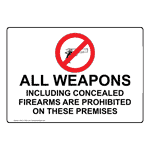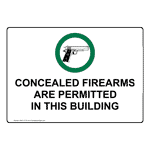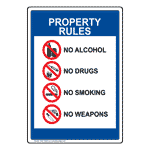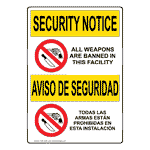
Guns in the Workplace: What Employers Can – and Can’t – Do

Workplace violence and guns in the workplace continue to be major concerns for employers across the country. Every year, 2 million American workers report being victims of workplace violence. In 2014, more than 400 people were fatally injured in work-related attacks, according to the Bureau of Labor Statistics. An active shooter situation is by far the deadliest incident. But what can employers do to limit firearms on company property? The answer varies greatly depending on where you are.
Addressing Laws Regarding Guns in the Workplace
A recent article in EHS Today looks at this situation in some detail, and uncovers just how complicated it can be for employers who want to keep guns out of their workplace. For example, most states agree that property owners can restrict firearms in the workplace, but storing a handgun in a privately owned vehicle parked on company property is an entirely different matter. More than 15 states have laws addressing guns in the workplace, including laws that protect an individual’s right to own firearms.
These gun laws may address the following:
- An employee’s right to store firearms in their private property or vehicle while parked in the employer’s parking lot
- The limited ability of an employer to search parked vehicles on the premises
- The ability of employers to prohibit firearms at the workplace if sufficient notice is posted
- The prevention of discrimination against gun owners
- The possibility of fines for failure to follow the state’s laws regarding firearms
- Immunity from workplace injuries if the employer complies with gun laws
- Allowance of guns at the workplace without violation of the OSHA Act
Today 26 states have “parking lot laws” that allow employees to keep legally owned guns in their vehicles, although specifics vary greatly from state to state. Parking lot exceptions can address:
- Where a lawfully-owned firearm is stored and secured
- Where an employee can park within the employer’s parking lot
- How a firearm is transported in a locked, privately-owned vehicle
Employers may prevent firearms at the workplace under certain parking lot restrictions, including:
- Employer-owned vehicles
- Illegal possession of firearms per state
- Restricted access parking lots
- Access to temporary secured storage prior to entering the employer’s parking area
Establishing Sound Firearm Policy in the Workplace
If an employer wants to restrict weapons, it is important to develop and distribute a policy addressing weapons possession on its premises. Proper signage is required in many states, as well. An effective workplace weapons policy should be clear and easy to understand, cover all acts of violence, prohibit employees from carrying firearms in the workplace as allowed by state law, have procedures for employees to report violent acts, and set disciplinary action for those who violate the policy.
Weapon Safety Signs:
 |  |  |  |
If you’re thinking about how you can address employee weapons on company property, this article is a great start to help you understand the situation, legal complications, and what you can – and can’t – do at your workplace.
What OSHA Says about Workplace Violence
There are currently no specific OSHA standards for workplace violence. However, under the General Duty Clause, Section 5(a)(1) of the Occupational Safety and Health Act of 1970, employers are required to provide their employees with a place of employment that is “free from recognized hazards that are causing or are likely to cause death or serious physical harm.” The courts have interpreted OSHA’s general duty clause to mean that an employer has a legal obligation to provide a workplace free of conditions or activities that either the employer or industry recognizes as hazardous and that cause, or are likely to cause, death or serious physical harm to employees when there is a feasible method to abate the hazard. OSHA has developed Enforcement Procedures and Scheduling for Occupational Exposure to Workplace Violence, which provides guidance and procedures to be followed when conducting inspections and issuing citations related to the occupational exposure to workplace violence.
OSHA identifies four types of workplace violence that companies need to address to help keep employees safe:
- Stranger violence – Random acts, such as robberies, when employees have contact with the general public
- Client and/or patient violence – Some workplaces have higher risk: hospitals, social services, government offices, schools, correctional facilities
- Employee violence – Interactions between employees and/or employers
- Personal violence – Typically involves someone who doesn’t work for you, but has a relationship with an employee

